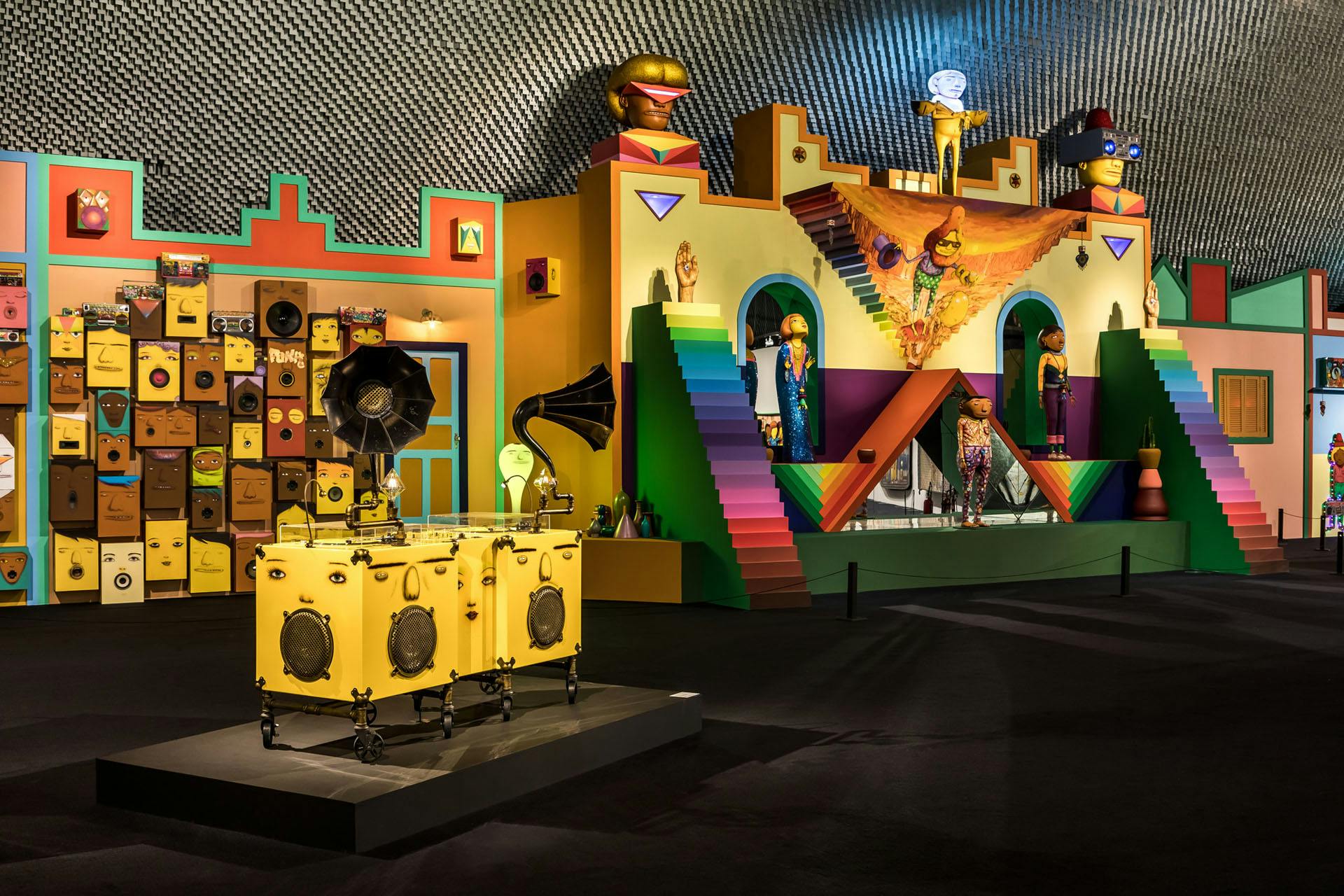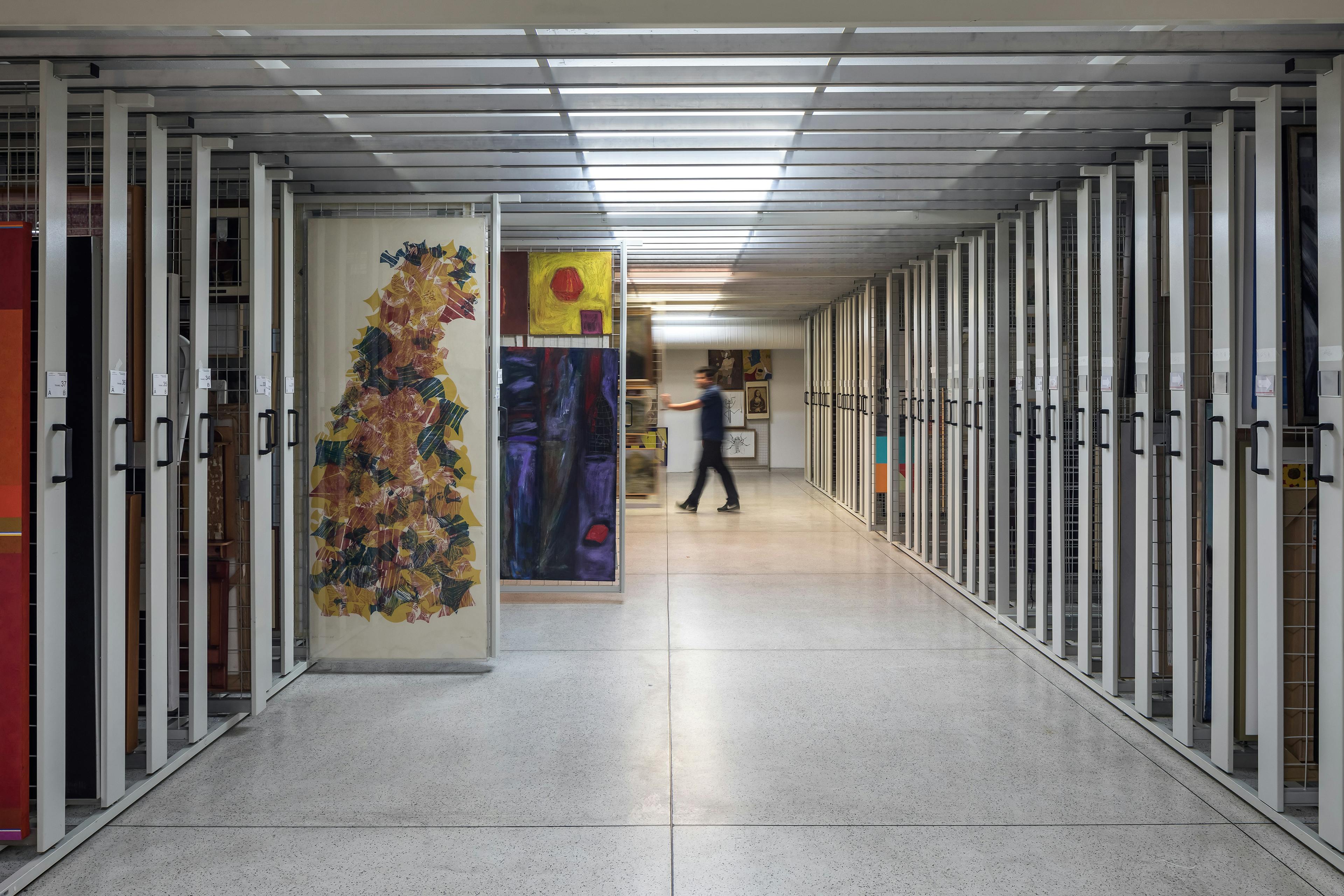Africa
Oscar Niemeyer Museum Collection
African Art for a Democratic Brazil
Since the centenary of the modernist challenge, so-called non-European arts have been garnering attention from museums around the world, which are in turn undergoing major transformations. These modifications are not exactly of a technical-stylistic order, nor do they concern intrinsic artistic manifestations, but they reflect political-cultural shifts in contemporary societies. As we also near the centenary of the rise and defeat of Nazi-Fascism, one of the most terrible dramas of 20th-century Europe and the world, the new struggle within the field of democracy also emerges, more so than ever before, in the realm of the championing and the quest for equivalence of artforms around the globe.
The primary wave of attention to global arts has made itself felt in the transformations and structural reforms underway at European museums since the late 20th and early 21st centuries. Old ethnology museums or ones still driven by a Eurocentric administration of artistic manifestations have begun to recognize that in the history of the origin of museums, which hark back from the cabinets of curiosities and pseudoscientific classifications of the colonial project, there occurred an insufficiency of method and above all a need for self-criticism regarding the imposing forces exerted by the colonial past upon the interpretation of artistic manifestations produced by the different peoples around the world.
The African collection at the Oscar Niemeyer Museum was established in 2018 through the donation of the Ivani and Jorge Yunes Collection out of São Paulo, one of the most important ones in the country. Nearly two thousand artworks from across the African continent were donated, but special attention was also paid to those peoples whose historical, cultural and genetic ties to the Brazilian people allow for a closer connection and comprehension of our roots. A case in point are Central and South-Central Africa peoples of the Bantu language complex, who brought us knowledge in such diverse fields as construction and metalworking, folk tales, food, and religiosity, and which influenced us in many other aspects of culture and the ecology of knowledge, such as artistic and functional woodworking and the use of the mortar and the hoe, among other extensive farming implements. Other instances include Sudanese peoples such as the Yorubas, Ashantis and others, who brought us the technology to identify golf-bearing regions, process and transform raw gold to add value by creating jewelry and other items later taken away from the country and sold in Europe. They also gave us the wooden gold pan technology and knowledge of tropical medicine, which they shared with other African and indigenous peoples and relayed to the Europeans during the colonial era, at which time they were still enslaved and treated as inferior beings. The showing of art that reveals the artistic wealth of peoples that helped form Brazil’s own people encourages a sense of belonging and promotes a sense of equality and other democratic ideals.
Historically speaking, the analysis and interpretation of artistic manifestations and of the world’s cultures based solely on the European experience have rendered that mainstream thinking unyielding and unfruitful, isolated and utterly obsolete since the rise of multiculturalism, the growth of multipolar geopolitics and the migration processes of contemporaneity. Since at least the inception, in 1995, of Musée du Quai Branly in France, whose motto, rather than refer to the maintenance of the monopoly on the “Other’s” interpretation, set out to promote what has become known as the “dialogue between cultures,” this history also began to change within the more traditional museums.
To name a few examples, other museums in Europe have followed suit, initially through internal reforms and changes in thinking and denomination: 1999 saw the creation in Gothenburg, Sweden, for instance, of the National Museum of World Culture; in Germany, in 2001, the former Frankfurt Museum of Ethnology became the Museum der Weltkulturen (Museum of World Cultures); through the combination of the collections of the National Museum of Ethnology in Leiden and of Amsterdam’s Tropenmuseum, the Royal Museum for Central Africa (Afrika Museum – Berg en Dal, Netherlands), in 2014, became simply the National Museum of World Cultures; the former Museum of Ethnology in Munich was converted, in 2014, into the Five Continents Museum; and the former Ethnological Museum of Berlin is now a part of the Humboldt Forum, thus named in honor of the German naturalist Alexander von Humboldt (1769-1859), an advocate of democracy and South American independence. Thus being, and recognizing that throughout the history of colonized countries, the tradition has been to replicate, often unthinkingly, the actions carried out in the metropoles, we wonder how many ethnography institutions across the Americas will soon take after Europe and embrace the democratic art model by becoming World Culture Museums?
On the other hand, that which is now known as “democracy in artforms” has a longstanding history. It had been tested before by the European modernists, for example. But more than just the playful exhibits whereby they would connect completely distinct worlds, placing academic art sculptures and their own next to sculptures from Africa and by other peoples, and more than the experience of an equally playful brand of “cultural appropriation” found in photographs by Man Ray, Alfred Stieglitz and others – where pale beauties are portrayed in black and white, often naked or half-naked, donning masks, sculptures and other African objects –, and more than just the contiguous exhibits of European and African art within artists’ studios or the apartments of wealthy, primitive art-loving collectors of the likes of Louise and Walter Arensberg, Klaus Gunther Perls, Helena Rubinstein, Monique and Jean-Paul Barbier-Mueller, among others, the democracy of forms really thrived through the self-awareness of pan-Africanist intellectuals and the inclusion into the arts of the ever-more widespread concept of equipollence.
The German aesthete August Schmarsow (1853-1936) was one of the pioneering theorists of undifferentiation and the incorporation into the arts of ethnographic objects we now know as equipollence. But that term, abstracted from none other than modernist art history, was employed in the 80s decade of the 20th century as a definition of the parallelism, in curation and museums, of “object forms” taken democratically, notwithstanding their origins, intents and cultures. The observation of artforms around the world from new perspectives as regards the representational value of objects has enabled the “democracy of forms.” This yet-ongoing process evokes, in plural fashion, the formal diversity of objects that would be elevated to the level of any museum works under new curatorial contexts. More than a process of unification of world cultures within museums’ systems, the “democracy of forms” may be one of the only fleeting instants during which the modernist project was truly incorporated into institutions; the notion that the realm of forms is much richer and more complex than Eurocentrism was able to deal with or make known. Even if the academic model put in place during Renaissance, which peaked in the late 19th century, did have its foundations, value and meaning throughout modernism, and even if it still does, it has been unable to provide answers to all of life’s “questions” in its formal explosion and to account for the gamut of visual elaboration possibilities that different cultures have brought along within their own histories, and are still able to bring in their connections with others, elevating the human experience in a multipolar way and on a global level.
The presence of the African collection at the Oscar Niemeyer Museum, alongside other European and non-European artistic expressions from around the world, is proof that this “democracy of forms” process is already underway, and originally so, in our country. As we see it, the importance of this collection, therefore, comes to fruition in three different aspects: the technical-pedagogical, the historical, and the social. From the technical-pedagogical standpoint, the Oscar Niemeyer Museum, via its educational section, conducts mediation actions with audiences of all ages regarding existing connections between African arts and cultures and the arts and cultures of Brazil and the world; from a historical standpoint, these artworks reflect the process and the clash between the memory of so-called traditional forms and the perception of a living folk culture which presents novel creations and fine art innovations in an increasingly interconnected contemporary world; and lastly, from a social standpoint, having resulted from the donation of the Ivani and Jorge Yunes Collection (CIJY), this artwork set was bred by a public-private partnership whose bold audacity shall serve as an example for other Brazilian museums to embrace relationships of this kind. A private institution with a public character, as expressed in the saying: “To Own, to Maintain and to Share,” espoused by CIJY managing director Beatriz Yunes Guarita, interferes positively upon cultural dynamics and helps promote and broaden a country’s arts, culture and democracy.
Renato Araújo da Silva, curator and African art specialist
___
The artworks from the African Art Collection were donated to MON, by the Ivani and Jorge Yunes Collection, in 2021.
Tchiwara Mask
bamana | Mali Wood, metal and beads 287 x 78 x 15 cm
Ceremonial Pot
bini (Kingdom of Benin) | Nigeria Metal alloy 41 x 35 x 33 cm
Calao Bird Figures
senufo | Ivory Coast Wood and metal 235 x 74 x 54 cm
Calao Bird Figures
senufo | Ivory Coast Wood and metal 235 x 75 x 62 cm
Woman with child
lobi | Burkina Faso Metal alloy 36.5 x 10.9 x 13 cm
Kore Mask
bamana | Mali Painted wood, cowries, beads and metal 46 x 26 x 18 cm
Videos
Materials for Download

Digital Folder

